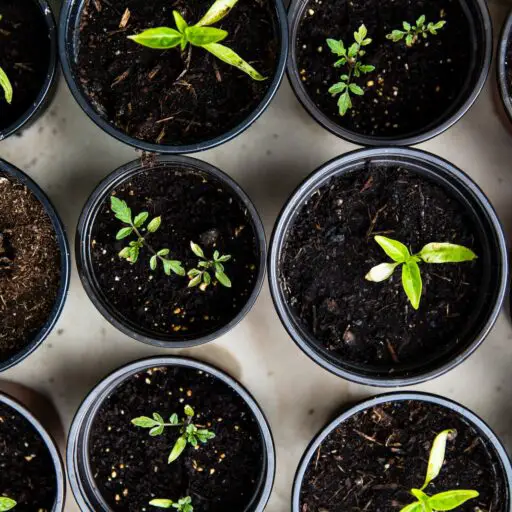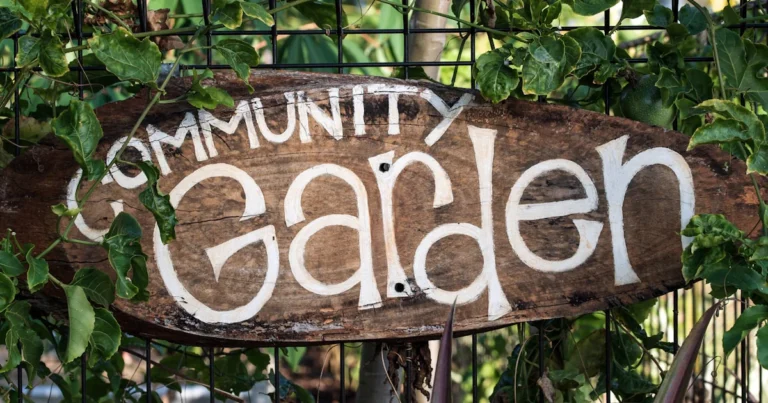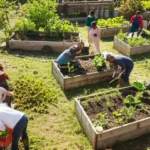Support our educational content for free when you purchase through links on our site. Learn more
Imagine transforming a vacant lot into a lush, thriving garden where neighbors gather, kids learn about nature, and fresh veggies grow right outside your door. Sounds like a dream? Well, it’s entirely possible—and more communities than ever are making it happen. Did you know that over 18,000 community gardens exist across North America, each one a beacon of health, connection, and sustainability? In this article, we’ll dig deep into 10 creative and effective strategies to promote growing food in your community, from digital outreach to hands-on workshops, funding tips, and inspiring success stories.
Whether you’re a seasoned green thumb or just starting out, we’ll guide you through everything you need to know to spark interest, build momentum, and cultivate a flourishing local food movement. Curious how to turn social media into your garden’s best friend? Or how to engage kids with fun gardening activities? Keep reading—we’ve got you covered with expert advice, real-world examples, and practical tips that will have your community growing together in no time.
Key Takeaways
- Community gardens boost health, social bonds, and local economies by providing fresh, accessible food and shared spaces.
- Effective promotion combines online presence, local events, partnerships, and storytelling to engage diverse audiences.
- Securing funding through grants, donations, and sponsorships is vital for garden sustainability and growth.
- Sustainable gardening practices and volunteer management ensure long-term success and community resilience.
- Inspiring stories and clear impact measurement help maintain enthusiasm and attract new supporters.
👉 Shop gardening essentials to get started:
Table of Contents
- ⚡️ Quick Tips and Facts
- 🌱 The Roots of Community Food Growing: A Brief History
- 🍎 Why Grow Together? Unearthing the Benefits of Community Food Production
- 🛠️ Getting Your Hands Dirty: Essential Steps to Start a Community Garden
- 🚀 Spreading the Word: Creative Strategies to Promote Community Food Growing
- 📱 Digital Dirt: Leveraging Online Platforms & Social Media
- 🎉 Ground-Level Growth: Hosting Engaging Local Events & Workshops
- 🤝 Branching Out: Forging Powerful Partnerships with Local Businesses & Organizations
- 🏫 Cultivating Curiosity: Implementing Educational Programs & Skill-Sharing
- 🗣️ Word-of-Mouth Wonders: Empowering Gardeners as Ambassadors
- 🎨 Visual Vibrancy: Using Signage, Art, & Public Displays
- 📰 Local Buzz: Engaging with Local Media & Storytelling
- 🎁 Incentive Sprouts: Offering Rewards & Recognition
- 👨👩👧👦 Family Fun: Creating Kid-Friendly Gardening Activities
- 📈 Measuring Growth: Showcasing Impact & Success Stories
- 💸 Funding Your Food Forest: Securing Resources for Community Gardens
- ♻️ Keeping It Green: Sustainable Practices for Thriving Community Gardens
- 🚧 Overcoming Weeds & Worries: Common Challenges and Solutions
- 🏆 Harvesting Success: Inspiring Community Garden Stories & Case Studies
- 🎉 Conclusion: Growing a Greener, Healthier, and More Connected Community
- 🔗 Recommended Links
- ❓ FAQ
- 📚 Reference Links
Quick Tips and Facts
To promote growing food in your community, consider starting a community garden, as suggested by Elinor Mccormick in her video available here. This approach not only provides access to fresh produce but also fosters a sense of community and offers educational opportunities. According to the American Community Gardening Association (ACGA), there are an estimated 18,000 community gardens across the United States and Canada, highlighting the popularity and potential of this method. For more information on how to get started, visit our Community Garden Events page.
Some key benefits of community gardens include:
- Increased access to fresh, locally grown produce
- Opportunities for community engagement and education
- Environmental benefits, such as reduced greenhouse gas emissions and waste
- Potential for community beautification and transformation of vacant lots
To learn more about the benefits of community gardens and how to promote growing food in your community, check out our Benefits of Community Gardens page.
The Roots of Community Food Growing: A Brief History
Community food growing has its roots in ancient practices, where communities would come together to cultivate and share food. This approach not only provided a source of nutrition but also fostered social connections and a sense of community. In modern times, community food growing has evolved to include a wide range of practices, from community gardens to urban agriculture initiatives.
For example, the FARMpreneur program offers business training for climate-smart farmers, while the Plant a Seed & See What Grows Foundation provides resources and support for community garden initiatives.
Why Grow Together? Unearthing the Benefits of Community Food Production
Growing food together as a community offers numerous benefits, including:
Nourishing Bodies: Health Benefits of Local, Fresh Food
Eating local, fresh food can have a significant impact on our health and wellbeing. According to Michigan State University Extension, locally grown food is picked at peak ripeness, often within 24 hours of purchase, leading to superior taste and nutritional value.
Cultivating Connections: Social & Mental Well-being in the Garden
Community gardens and food growing initiatives also provide opportunities for social connection and community building. As noted by Tulane University’s School of Public Health, community gardens can help foster a sense of community and provide a space for people to come together and connect.
Greening Our Cities: Environmental Impact of Urban Agriculture
Urban agriculture and community food growing initiatives can also have a positive impact on the environment. By reducing the need for transportation and promoting sustainable farming practices, community gardens can help reduce greenhouse gas emissions and support local ecosystems.
Sowing Seeds of Change: Economic Advantages & Food Security
In addition to the social and environmental benefits, community food growing initiatives can also have a positive impact on local economies. By supporting local farmers and promoting food security, community gardens can help stimulate local economic growth and provide access to fresh, healthy food.
Getting Your Hands Dirty: Essential Steps to Start a Community Garden
Starting a community garden requires careful planning and consideration. Here are some essential steps to get started:
Finding Your Plot: Site Selection & Land Access
The first step in starting a community garden is to find a suitable location. This may involve identifying available land, reviewing soil quality and water access, and securing necessary permits and approvals.
Legal Loopholes & Local Lore: Navigating Permits & Regulations
Once a location has been identified, it’s essential to navigate the necessary permits and regulations. This may involve working with local government agencies, community organizations, and other stakeholders to ensure that the garden is established and operated in compliance with local laws and regulations.
Gathering the Green Thumbs: Building Your Core Team & Community Buy-in
Building a strong core team and fostering community buy-in is critical to the success of a community garden. This may involve recruiting volunteers, establishing a governance structure, and developing a plan for community engagement and outreach.
Spreading the Word: Creative Strategies to Promote Community Food Growing
There are many creative strategies for promoting community food growing, including:
-
Digital Dirt: Leveraging Online Platforms & Social Media
Utilize online platforms and social media to promote community food growing initiatives and connect with potential supporters. -
Ground-Level Growth: Hosting Engaging Local Events & Workshops
Host local events and workshops to educate and engage the community in community food growing initiatives. -
Branching Out: Forging Powerful Partnerships with Local Businesses & Organizations
Develop partnerships with local businesses and organizations to support community food growing initiatives and promote local food systems. -
Cultivating Curiosity: Implementing Educational Programs & Skill-Sharing
Develop educational programs and skill-sharing initiatives to promote community food growing and support local food systems. -
Word-of-Mouth Wonders: Empowering Gardeners as Ambassadors
Empower gardeners as ambassadors for community food growing initiatives, providing them with the tools and resources needed to promote and support local food systems. -
Visual Vibrancy: Using Signage, Art, & Public Displays
Utilize signage, art, and public displays to promote community food growing initiatives and create a visual presence in the community. -
Local Buzz: Engaging with Local Media & Storytelling
Engage with local media and utilize storytelling to promote community food growing initiatives and share the stories of local gardeners and food producers. -
Incentive Sprouts: Offering Rewards & Recognition
Offer rewards and recognition to gardeners and supporters of community food growing initiatives, providing incentives for participation and engagement. -
Family Fun: Creating Kid-Friendly Gardening Activities
Develop kid-friendly gardening activities and initiatives, promoting community food growing and supporting local food systems. -
Measuring Growth: Showcasing Impact & Success Stories
Showcase the impact and success stories of community food growing initiatives, promoting the benefits and value of local food systems.
Funding Your Food Forest: Securing Resources for Community Gardens
Securing resources and funding is essential for the success of community gardens. Here are some strategies for funding your food forest:
Grant Goodies: Navigating Funding Opportunities & Applications
Research and navigate funding opportunities and applications, including government grants, foundation grants, and corporate sponsorships.
Community Contributions: Creative Fundraising & Donations
Develop creative fundraising and donation strategies, including crowdfunding, events, and in-kind donations.
Corporate Cultivation: Sponsorships & Partnerships with Brands
Develop sponsorships and partnerships with brands and businesses, providing resources and support for community gardens and local food systems.
👉 CHECK PRICE on:
- Gardening tools on Amazon | Gardening tools on Walmart | Burpee Official Website
- Seeds on Amazon | Seeds on Etsy | Seed Savers Exchange Official Website
Keeping It Green: Sustainable Practices for Thriving Community Gardens
Sustainable practices are essential for the long-term success of community gardens. Here are some strategies for keeping it green:
Water Wisely: Efficient Irrigation & Rainwater Harvesting
Implement efficient irrigation systems and rainwater harvesting practices, reducing water waste and promoting water conservation.
Compost Kings & Queens: Building Healthy Soil with Organic Matter
Develop composting programs and practices, building healthy soil and promoting sustainable gardening practices.
Pest Patrol: Organic Pest Management & Beneficial Insects
Implement organic pest management practices and promote beneficial insects, reducing the use of chemical pesticides and promoting ecosystem balance.
Overcoming Weeds & Worries: Common Challenges and Solutions
Community gardens often face common challenges and worries, including:
Volunteer Vexations: Recruitment, Retention, & Management
Develop strategies for recruiting, retaining, and managing volunteers, ensuring a strong and dedicated team.
Conflict in the Compost Pile: Managing Group Dynamics & Disputes
Implement strategies for managing group dynamics and disputes, promoting communication and collaboration among gardeners and stakeholders.
Weathering the Storm: Climate Resilience & Adapting to Environmental Changes
Develop strategies for climate resilience and adapting to environmental changes, ensuring the long-term sustainability of community gardens.
For more information on community garden policies and best practices, visit our Community Garden Policies page.
To learn more about garden design ideas and edible plants, check out our Garden Design Ideas and Edible Plants pages.
👉 Shop gardening tools on:
Harvesting Success: Inspiring Community Garden Stories & Case Studies
Community gardens have the power to transform lives and communities. Here are some inspiring stories and case studies:
- Moon Valley Farm, a certified organic farm in Maryland, has been providing fresh produce to the local community for over 15 years.
- The Plant a Seed & See What Grows Foundation, a non-profit organization, provides resources and support for community garden initiatives and promotes sustainable gardening practices.
For more information on community garden success stories and case studies, visit our Community Garden Events page.
To learn more about how to promote gardening in your community, check out our article on How Will You Promote Gardening in Your Community?.
Conclusion: Growing a Greener, Healthier, and More Connected Community 🌿
Well, we’ve journeyed through the fertile fields of community food growing—from its rich history to practical steps, creative promotion strategies, and inspiring success stories. If you’re wondering how to best promote growing food in your community, the answer is clear: start small, think big, and grow together. Whether it’s a humble community garden plot or a sprawling urban farm, the power lies in connection—connecting people to the soil, to each other, and to the food on their plates.
We’ve seen how local food tastes better, nourishes bodies, supports local economies, and even helps the planet breathe easier. Plus, community gardens are vibrant hubs of learning, sharing, and joy. Remember Emma from Maryland’s story? She started with a balcony garden and now feeds thousands—proof that passion and persistence can turn tiny seeds into thriving ecosystems.
So, what about those lingering questions? How do you keep volunteers engaged? How do you navigate permits? How do you measure success? The key is community involvement, clear communication, and celebrating every harvest—big or small. Use digital tools, host fun events, partner with local businesses, and don’t forget to share your stories. These are the secret ingredients to a flourishing food-growing movement.
At Community Gardening™, we confidently recommend starting with a community garden as your launchpad. It’s accessible, inclusive, and impactful. Plus, with the right funding, sustainable practices, and a sprinkle of creativity, your community can reap the rewards for years to come.
Ready to dig in? Let’s grow together! 🌱
Recommended Links
👉 Shop Gardening Essentials and Resources:
-
Gardening Tools:
Amazon | Walmart | Burpee Official Website -
Seeds & Plants:
Amazon | Etsy | Seed Savers Exchange Official Website -
Books on Community Gardening & Urban Agriculture:
FAQ
What are effective ways to start a community garden?
Starting a community garden begins with identifying a suitable site—think accessible land with good sunlight and water access. Next, gather a committed core team of volunteers and stakeholders who share your vision. Don’t overlook the importance of navigating permits and local regulations early to avoid surprises. Engage the community through meetings and outreach, and develop a clear plan for garden management, including plot assignments, maintenance schedules, and conflict resolution. Hosting workshops and events can build momentum and attract more participants. Remember, patience and persistence are key!
Read more about “How Can We Encourage People in the Garden? 12 Proven Ways to Grow 🌿”
How can community gardening improve local food security?
Community gardens increase local food security by providing direct access to fresh, nutritious produce, especially in urban “food deserts” where grocery stores are scarce. They reduce dependence on long supply chains vulnerable to disruption and empower residents to grow their own food. Additionally, gardens often serve as educational hubs, teaching sustainable growing practices and food preservation, which further strengthens community resilience. By fostering local food networks, community gardens contribute to a more stable and equitable food system.
Read more about “Can Anyone Join a Community Garden? 15 Must-Know Facts 🌱 (2025)”
What resources are needed to promote urban agriculture?
Promoting urban agriculture requires a mix of physical resources (land, water, tools, seeds), human resources (volunteers, educators, coordinators), and financial resources (grants, donations, sponsorships). Access to technical knowledge about soil health, pest management, and sustainable practices is crucial. Equally important are community partnerships with local businesses, schools, and government agencies to provide support and legitimacy. Digital platforms and social media amplify outreach and engagement, making promotion more effective.
Read more about “🌱10 Ways to Fund Your Community Garden”
How do community gardens foster social connections and collaboration?
Community gardens act as social hubs, bringing together people from diverse backgrounds to work towards a common goal. Shared tasks like planting, weeding, and harvesting encourage teamwork and build trust. Gardens often host events, potlucks, and workshops that foster friendships and cultural exchange. This collaborative environment enhances mental well-being, reduces social isolation, and strengthens community identity. Moreover, gardeners often become ambassadors, spreading enthusiasm and knowledge beyond the garden’s borders.
How can challenges like volunteer burnout and conflicts be managed?
Volunteer burnout can be mitigated by rotating responsibilities, recognizing contributions, and ensuring tasks are manageable. Clear communication and defined roles help prevent misunderstandings. For conflicts, establishing a conflict resolution protocol and encouraging open dialogue are essential. Facilitators or mediators can help navigate disputes. Regular community meetings provide a platform to address concerns and celebrate successes, keeping morale high.
Reference Links
- 7 Benefits of Eating Local Foods – Michigan State University Extension
- Moon Valley Farm – Maryland Organic Farm
- Benefits of Community Gardens – Tulane University School of Public Health
- American Community Gardening Association
- Plant a Seed & See What Grows Foundation
- FARMpreneur Program
- Burpee Official Website
- Seed Savers Exchange
- Community Gardening™ Benefits of Community Gardens
- Community Gardening™ Community Garden Events
- Community Gardening™ Community Garden Policies
- Community Gardening™ Garden Design Ideas
- Community Gardening™ Edible Plants
- How Will You Promote Gardening in Your Community? – Community Gardening™









